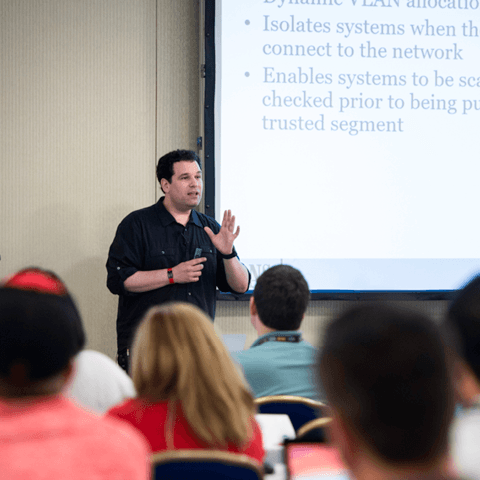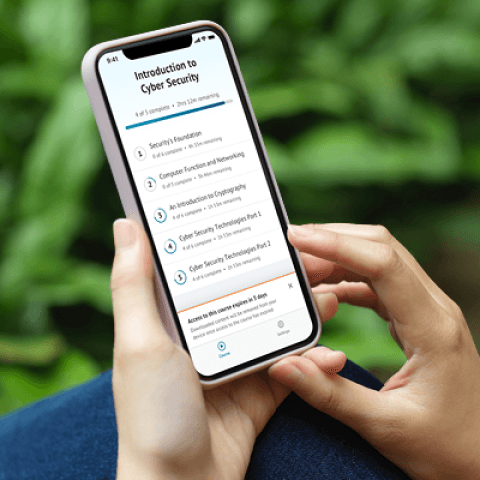SEC595: Applied Data Science and AI/Machine Learning for Cybersecurity Professionals


Experience SANS training through course previews.
Learn MoreLet us help.
Contact usBecome a member for instant access to our free resources.
Sign UpWe're here to help.
Contact Us
Apply your credits to renew your certifications
Attend a live, instructor-led class at a location near you or remotely, or train on your time over 4 months
Course material is geared for cyber security professionals with hands-on experience
Apply what you learn with hands-on exercises and labs
Gain the skills you need to understand and mitigate vulnerabilities and secure web applications, APIs, and microservices.
[Labs are] thought out and easy to follow with good practical knowledge learned.
SEC522 is a hands-on, advanced application security course that teaches security professionals to defend the HTTP-based technologies powering today's digital ecosystem. As HTTP forms the backbone of cloud services, APIs, microservices, and AI platforms, mastering web application security is essential for protecting modern infrastructure. Through 20 practical labs and a Defend-the-Flag challenge, participants gain skills to identify vulnerabilities, implement defenses, and secure the web protocols that underpin everything from traditional applications to cutting-edge AI services. The course prepares students for the GWEB certification while addressing OWASP Top 10 threats and emerging attack vectors against HTTP-based systems.


Jason is a leading consultant sought after by Global 500 companies across finance, healthcare, and technology sectors worldwide. Over the years, he has led intrusion detection, penetration testing, defense improvement programs, and incident response.
Read more about Jason Lam

Dr. Johannes Ullrich is the Dean of Research for SANS Technology Institute, a SANS Faculty Fellow, and founder of the Internet Storm Center (DShield.org) which provides a free analysis and warning service to thousands of Internet users and organizations.
Read more about Dr. Johannes UllrichExplore the course syllabus below to view the full range of topics covered in SEC522: Application Security: Securing Web Applications, APIs, and Microservices.
The course begins with web application fundamentals, including the HTTP protocol and architecture, which are essential for security. It then covers securing configurations in modern development, focusing on Infrastructure as Code. It also explores best practices for managing infrastructure, cloud, and web-server configurations to enhance security.
Section 2 focuses on defending against threats from external input, which modern applications receive from various sources, including browsers, web services, and non-web-standard systems. It covers common input-related attacks, real-world examples, and defense patterns.
Section 3 covers authentication and authorization in web apps, including exploits and mitigations. It explores passwordless and multifactor authentication, modern SSO solutions like OAuth, JWT, and OpenID Connect, and their challenges. The section concludes with encryption best practices for data in transit and storage.
This section begins with SOAP-based web services before shifting to JavaScript’s front-end security concerns, including CORS. It covers security risks, mitigation strategies, and best practices for AJAX applications. The section concludes with client-side defenses like Content Security Policy, exploring both benefits and limitations.
This section covers deserialization security, DNS rebinding, and security risks in REST and GraphQL APIs. It explores microservices architecture, common attacks, and best practices. The day concludes with a discussion on securely integrating AI components into modern applications.
This section introduces DevSecOps in enterprise web development. A hands-on lab reinforces course lessons, challenging students to identify real vs. false vulnerabilities and apply mitigations. Exercises cover securing the OS, web server, configurations, and fixing coding flaws.
This role conducts conducts cybersecurity research and development. Find the SANS courses that map to the Cybersecurity Research & Development SCyWF Work Role.
Explore learning pathCloud Security Engineers integrate advanced security measures into cloud and cloud-native environments, maximize security automation within DevOps workflows, and proactively mitigate threats to safeguard modern cloud infrastructures.
Explore learning pathResponsible for conducting software and systems engineering and software systems research to develop new capabilities with fully integrated cybersecurity. Conducts comprehensive technology research to evaluate potential vulnerabilities in cyberspace systems.
Explore learning pathThis role uses monitoring and analysis tools to identify and analyze events and to detect incidents. Find the SANS courses that map to the Defense SCyWF Work Role.
Explore learning pathResponsible for analyzing the security of new or existing computer applications, software, or specialized utility programs and delivering actionable results.
Explore learning pathResponsible for the secure design, development, and testing of systems and the evaluation of system security throughout the systems development life cycle.
Explore learning pathApplication penetration testers probe the security integrity of a company’s applications and defenses by evaluating the attack surface of all in-scope vulnerable web-based services, clientside applications, servers-side processes, and more. Mimicking a malicious attacker, app pen testers work to bypass security barriers in order to gain access to sensitive information or enter a company’s internal systems through techniques such as pivoting or lateral movement.
Explore learning pathResponsible for developing, creating, modifying, and maintaining computer applications, software, or specialized utility programs.
Explore learning pathAdd a GIAC certification attempt and receive free two practice tests. View pricing in the info icons below.
When purchasing a live instructor-led class, add an additional 4 months of online access after your course. View pricing in the info icons below.
Not only does SEC522 teach the defenses for securing web apps, it also shows how common and easy the attacks are and thus the need to secure the apps.
I think SEC522 is absolutely necessary to all techies who work on web applications. I don't think developers understand the great necessity of web security and why it is so important.
Lots of good hands-on exercises using real world examples.
The exercises are a good indicator of understanding the material. They worked flawlessly for me.

Get feedback from the world’s best cybersecurity experts and instructors

Choose how you want to learn - online, on demand, or at our live in-person training events

Get access to our range of industry-leading courses and resources